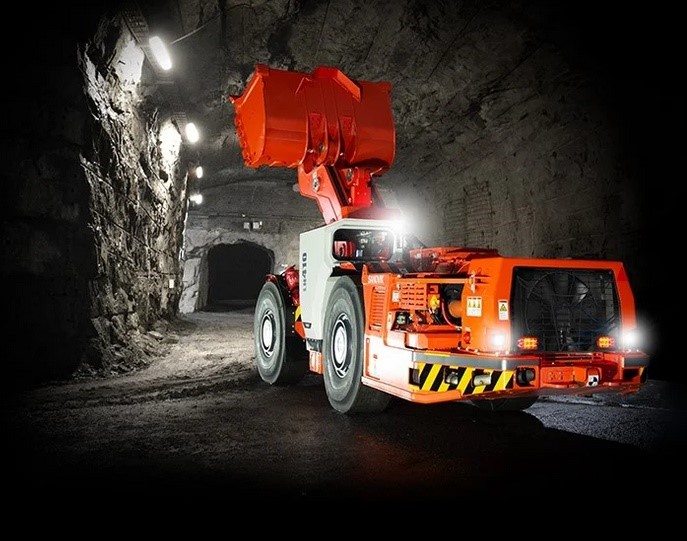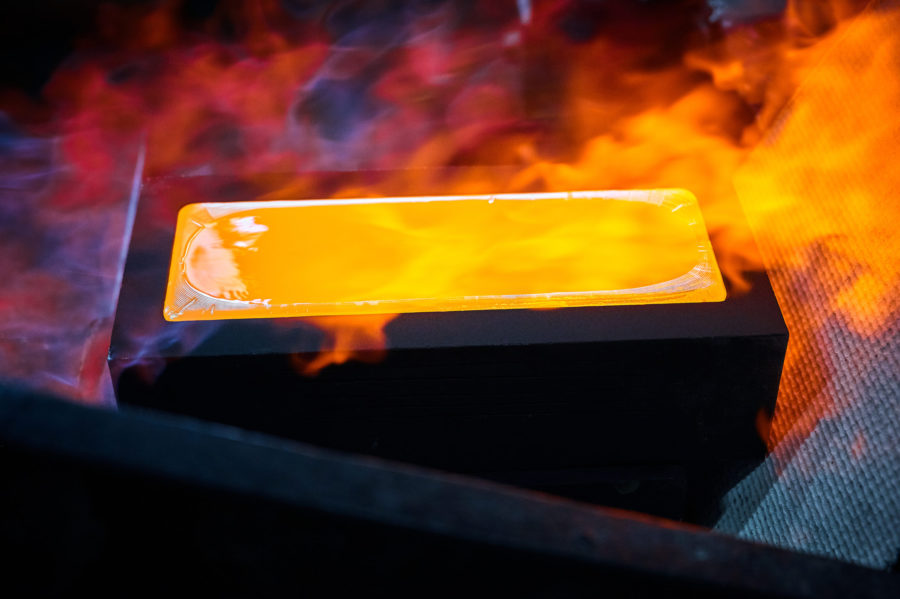Iron Road reports positive prefeasibility study results for Central Eyre iron project
Iron Road Limited (ASX:IRD) is pleased to announce the results of a Prefeasibility Study (PFS) conducted over the Murphy South and Boo-Loo deposits at the flagship Central Eyre Iron Project (CEIP) in South Australia.
Highlights
– Prefeasibility Study underpins strong project fundamentals and development potential – 12.4 million tonne per annum iron concentrate operation based on the current Mineral Resource (Stage 1 ‘base case’).
– High grade concentrate of 67% iron at -106 micron grind achievable.
– Robust and attractive project, with competitive operating and capital costs.
– Project value will increase significantly with expected increases in Murphy South Mineral Resource.
– Product c haracteristics suitable for immediate standard blast furnace use as a sinter blend feedstock, expanding potential customer base.
– Project enjoys significant advantages with a large uniform and coarse-grained, orebody situated in a favourable geographical location and geopolitical jurisdiction.
– Number of potential areas for increases in project returns above base case identified – further Mineral Resource expansion, premium pricing confirmation, coarser grind, rail options and infrastructure cost sharing.
– Preliminary financing and partnership discussions have commenced.
Key Findings
The Key Findings table below illustrates the significant impact that additional resources, potential CEIP concentrate price premium and generally higher prices for iron ore will have on project value.
The PFS (“base case”) incorporates the current Murphy South Mineral Resource and long term pricing forecasts. However, the Compan y anticipates that the Murphy South extension drilling completed earlier this year will add 80-120Mt1 to the Mineral Resource, the current drill programme at Murphy South (west) is expected to add 500-800Mt this year and a further drill programme for Murphy South (east) has been submitted to Primary Industry & Resources SA (PIRSA) for review and approval.
Commentary
The Central Eyre Iron Project PFS indicates that Iron Road can develop a robust project at a competitive capital cost and operating costs. The high grade product will be highly desirable for almost all blast furnace steel mill customers, with an expected pricing premium as a result. Due to the coarseness of the concentrate, pelletising will be unnecessary, avoiding a possible worldwide shortage of pelletising capacity as several finer-grained magnetite projects commence production.
Iron Road Managing Director, Mr Andrew Stocks, said the study result clearly delivered on the promise initially shown at the CEIP.
“This is a very significant result for Iron Road, which places our project directly alongside the top tier magnetite development projects underway in Australia. The PFS confirms we have a robust and attractive project with competitive capital and operating costs.
“We have also identified a number of areas where project returns can potentially be increased well above the base case.
“This places the CEIP in an excellent position to progress to the next phase of development, as we seek to introduce a large development partner,” said Mr Stocks.
“In the coming months I look forward to the resource drilling results from the western flank of the extensive orebody outlined at Murphy South and progressing to ultimate project development.”
Summary of Key PFS Outcomes
– Commercial viability of 12.4 million tonne per annum iron concentrate operation confirmed with production of a high grade co ncentrate of 67% iron (Stage 1 “base case”).
– Concentrate with grind size of -106µm (80% passing or p80).
– Transport route to port via slurry pipeline with return water line.
– Expected capital costs of A$2.59 billion (including contingency of A$338M) and operating costs of A$59 per tonne (FOB) of high quality iron concentrate.
– Stage 1 “base case” net present value of $1.09 billion at 8% discount rate (based on Pilbara fines dmtu price).
– Indicative production specifications are for a 67% Fe coarse grained sinter feedstock, which is expected to fetch a premium above Pilbara fines prices.
– Sensitivity analysis of premium pricing to Pilbara fines indicates that project returns increase dramatically when pricing is linked to the expected value in use for the CEIP product.
– Excellent mineralogical characteristics of the ore have been confirmed. A simple process design delivers high quality sinter feed at a competitive cost.
– Coarse grinding with efficient high pressure grinding rolls reduces power and capital costs with higher iron recoveries.
– Metallurgical testing and marketing studies indicate that CEIP’s -106 micron (p80) product will be highly attractive to standard blast furnace sinter plant operators, making the product attractive to a large number of customers.
(1) The concentrate will be marketed as high quality sinter feed stock, avoiding the potential worldwide shortage of pelletising capacity.
(2) Final product is expected to be suitable for blending with lower grade “earthy” Pilbara style fines.
– The attractive physical and chemical characteristics of the ore body, including coarse grain size and simple liberation, result in efficient processing at lower head grades.
– Scoping level estimates in the CEIP PFS have assessed a -125 micron (p80) concentrate option with rail to port in lieu of a slurry pipeline. Initial results are encouraging and are being further developed for both the -106 and -125 micron grind options.
– The PFS findings are based on a formally structured programme conducted over 15 months and incorporates results from:o Over 47,000 metres of diamond drilling;
(1) Over 3,000 Davis Tube Recovery (DTR) tests; and
(2) Over 8,000 XRF (X-Ray Fluorescence) determinations.
– Key contributors to the PFS by discipline include:
(1) Coffey Mining (Coffey), who produced the Mineral Resource, geotechnical and mine modelling;
(2) Mineral Engineering Technical Services Pty Ltd (METS), who produced the process design;
(3) AMMTEC Limited, directed by METS, conducted the metallurgical test work;
(4) Sinclair Knight Mertz (SKM) reviewed port options and ground water;
(5) Ferrum Consultants considered the iron market specifically for the coarse CEIP product; and
– Evans & Peck Ltd (E&P) provided oversight and independent review throughout the study.
– The prefeasibility study “base case” incorporates the current Murphy South Mineral Resource estimate, which is a third, or two kilometres of the potential six kilometres, of strike.
– Current exploration drilling is increasing knowledge of the Murphy South and nearby deposits and is on track to substantially increase the Mineral Resource at Murphy South. The exploration target for the tenement is 2.8 to 5.8 billion tonnes of magnetite gneiss.
Pricing Sensitivity
Indicative production specifications are for a coarse grained sinter feedstock grading 67% iron, expected to fetch a premium above Pilbara fines prices. The sensitivity analysis of pricing fines indicates that project returns increase dramatically when pricing is linked to the expected value in use for the CEIP product.
Development Drilling
Iron Road’s d evelopment drilling programme is comprehensive and ongoing. To date, a total of 50,706 metres of diamond core drilling for 177 holes, supported by well documented and controlled analysis has been employed to produce the following resource estimate.
Over 28,000 metres of this resource drilling has been conducted at the Murphy South deposit alone.
The Company’s development drilling programmes and associated sampling have been used to provide the data necessary to advance the PFS mine plan and metallurgical test work programme which underpins the design of the process flowsheet.
The ongoing development drilling programme is expected to increase Iron Road’s knowledge of the size on the Murphy South Deposit, as only two kilometres of the total six kilometres strike length is represented in the current resource estimate. Project value will increase significantly as a result of an increase in Murphy South resources.
Mining
The m ining method incorporated in the PFS by Coffey Mining is a large scale conventional drill, blast, shovel, and truck mining operation. Preliminary pit shells, mine designs and tailings dam have been developed and fully scheduled for the existing Murphy South Mineral Resources. The PFS focuses on developing the larger and lower strip ratio Murphy South deposit in preference to Boo-Loo.
Pit optimisation results by Coffey Mining demonstrate that the curve representing operating cash flow versus pit shell size is very flat. This indicates that the pit is very robust and that the shell selected for the detailed pit design work is not critical.
Potential for in-pit crushing and conveying to reduce operating costs further will be assessed as part of the Definitive Feasibility Study.
Processing
METS identified the optimal flowsheet for the CEIP which comprises the following:
– Run of Mine (ROM) ore truck tipped into the crushin g circuit delivering -30mm (p80) ore to the Crushed Ore Stockpile (COS);
– COS feeds High Pressure Grinding Rolls (HPGR) in closed circuit, producing a 8mm (p80) feed for rougher Wet Low Intensity Magnetic Separators (W-LIMS);
– Primary W-LIMS concentrate to ball milling;
– Ball mill undersize to cleaner W-LIMS to produce magnetite concentrate;
– Slurry concentrate pumped to the Sheep Hill or other port site; dewatered and stacked;
– Concentrate product reclaimed and loaded onto Cape size vessels for export.
Infrastructure
Port: The study includes all costs and charges to use a third-party port, notionally located at Sheep Hill. Iron Road believes the project scale justifies the development of a stand-alone facility should a third-party port not be available within the required time frame.
Water: The PFS provides for construction and operation of a dedicated 27Gl per year desalination plan t located at the port. At this stage, options for joint development with other water customers have not been incorporated into the project scope.
Electricity: Electrical power from the National Grid will be sourced via a new 275kV transmission line between the CEIP site and Port Augusta. At this stage, options for joint development with other customers have not been incorporated into the project scope.
Product Transport: The proposed slurry pipeline pipe route is predominately sited along road and rail reserves and incorporates five pumping stations necessary to transport the proposed CEIP concentrate (-106 micron).
Infrastructure Options
Rail: Rail based product transport has been assessed at a scoping level with encouraging results. Potential benefits include improved capital and operating costs and enhanced regional infrastructure due to necessary upgrades and extensions to the existing rail networks. Rail options are being revie wed.
Rail transport is also an attractive strategic option for Stage 2 development scalability and infrastructure sharing with other potential users.
Desalination Plant: Rail transport decouples the requirement for a return water pipeline from the port and would facilitate construction of a desalination plant at a coastal location closer to the CEIP operations.
On the Road to Development
As a result of the robust study outcomes, the Company has resolved to accelerate progress at the Central Eyre Iron Project, including resource growth and conversion, continuation of project evaluation and financing options. Key components are highlighted below.
– Continue with orebody investigations, resource growth at Murphy South (west and east) and establish ore reserves;
– Further drilling on other high potential areas of the tenement, commencing with Hambidge;
– Investigate areas for potential increases in proje ct value by extending mining and process optimisations, for example:
(1) In-pit crushing and conveying;
(2) Coarser concentrate production, namely -125 micron product;
(3) Refine preferred product transport, port and desalination options; and
(4) Infrastructure sharing and synergies with others;
– Progress permitting and continue with government and community engagement through established Company protocols, the Eyre Peninsula Mining Alliance (EPMA) and Community Engagement Group Australia (CEGA);
– Financing and partnering opportunities assessment and selection;
– Prepare for and initiate Definitive Feasibility Study (DFS). The DFS will examine the PFS Stage 1 “base case” of 12.4Mtpa concentrate production with the expected larger Murphy South Mineral Resource over its entire 6 kilometres strike length (ie. including west and east extensions). This addition will substantially increase project NPV. I ncreased production for Stage 2 will also be assessed. Preliminary analysis suggests Stage 2 should further increase production by 50 to 100 per cent.
Read the full news release here.
More News
Sandvik says no tariff hit on demand so far, after profit miss
Swedish mining equipment maker missed quarterly earnings estimates on Wednesday.
April 16, 2025 | 08:54 am
Gold price surpasses $3,300 to new record as tariff war ramps up
April 16, 2025 | 08:07 am
{{ commodity.name }}
{{ post.title }}
{{ post.date }}




Comments